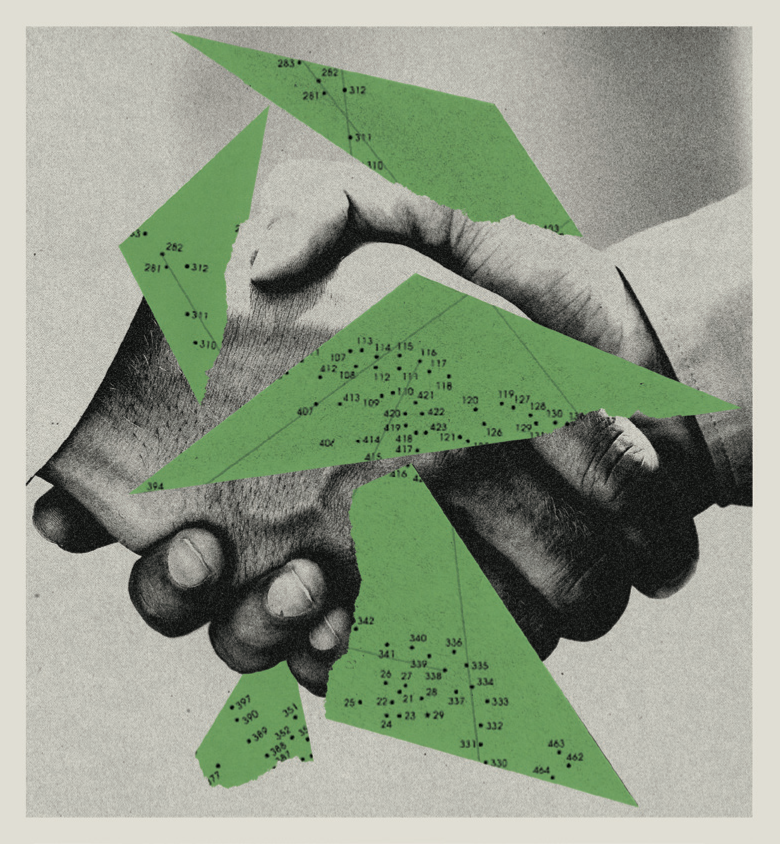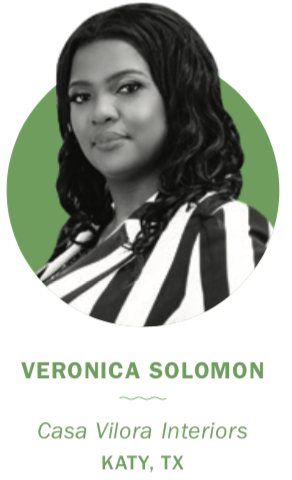
1. MASTER THE FIRST MEETING
Bay Area designer Alison Pickart has a standard approach for each first client meeting that has served her well over the years. "I always try to put people at ease when we're talking and inject humor [into the conversation]," she says. "When you interview for a project, the last thing anybody wants to do is look at their house like it's a root canal or a trip to the dentist. The process is going to be long, complicated and expensive. The people leading your team need to be fun and energetic and incredibly knowledgeable, so that's what I like to portray." Alabama-based architect Jeffrey Dungan agrees. "I always tell them that the overarching goal is to make this a pleasurable—dare I say fun—ride," he explains. "I say, 'We're going to do the heavy lifting so that you don't have to. You can sit back and enjoy.'"
 New York designer Nicole Gibbons (founder of digital direct-to-consumer paint company Clare), has a different view of the initial meeting, which, for her, is all about brass tacks. “You should be focused less on selling how awesome you are and more on your process," she says. "That's what people want to know right away: How much do you charge? How long will it take to complete this project?" She also makes sure to be on the same page with clients about their goals. "There's a lot of education around 'Let's first figure out what your needs are.' A lot of times people don't really know."
New York designer Nicole Gibbons (founder of digital direct-to-consumer paint company Clare), has a different view of the initial meeting, which, for her, is all about brass tacks. “You should be focused less on selling how awesome you are and more on your process," she says. "That's what people want to know right away: How much do you charge? How long will it take to complete this project?" She also makes sure to be on the same page with clients about their goals. "There's a lot of education around 'Let's first figure out what your needs are.' A lot of times people don't really know."
 While some designers prefer to take that first meeting in a client's home to get the lay of the land, others want potential clients to soak up an elegant interior for the associations it brings. For Thomas A. Kligerman, a partner at the New York– and San Francisco–based architecture and interiors firm Ike Kligerman Barkley, it's all about setting the mood. "Everything we do is based in history, even if it's something modern," he says. "I try to establish that by meeting in our library, where we have more than 4,000 books on architectural and design history. Just meeting there establishes a baseline."
While some designers prefer to take that first meeting in a client's home to get the lay of the land, others want potential clients to soak up an elegant interior for the associations it brings. For Thomas A. Kligerman, a partner at the New York– and San Francisco–based architecture and interiors firm Ike Kligerman Barkley, it's all about setting the mood. "Everything we do is based in history, even if it's something modern," he says. "I try to establish that by meeting in our library, where we have more than 4,000 books on architectural and design history. Just meeting there establishes a baseline."
2. MAKE SURE THEY’RE A FIT FOR YOU
 "In an interview situation, it's very much a two-way street," Pickart says. "They're checking you out just as much as you're checking them out." As such, confidence is key. Just ask former ascendant rock star Max Humphrey, now a designer in Portland, Oregon. "When I was a bass player, I could just stand there and look cool. I wasn't a great musician, but I was good at presenting myself as one." Humphrey, who spent 10 years at a Los Angeles design firm before launching his own company in 2016, projects unflappable mettle. "Most of what I do now is try to talk people out of hiring me," he admits. "I can tell now if a prospective client is calling because they're actually familiar with my work, or if they just scrolled through Instagram for two minutes and happened upon me."
"In an interview situation, it's very much a two-way street," Pickart says. "They're checking you out just as much as you're checking them out." As such, confidence is key. Just ask former ascendant rock star Max Humphrey, now a designer in Portland, Oregon. "When I was a bass player, I could just stand there and look cool. I wasn't a great musician, but I was good at presenting myself as one." Humphrey, who spent 10 years at a Los Angeles design firm before launching his own company in 2016, projects unflappable mettle. "Most of what I do now is try to talk people out of hiring me," he admits. "I can tell now if a prospective client is calling because they're actually familiar with my work, or if they just scrolled through Instagram for two minutes and happened upon me."
 Katy, Texas–based designer Veronica Solomon has a list of questions she always asks prospective clients, including whether they've reviewed her online portfolio and the section on her site that details her process. "It opens the conversation about the way I work. I also ask what made them call me—that's very telling, and helps me begin to understand what's important to them—as well as if they have any experience working with another design firm or ordering custom products."
Katy, Texas–based designer Veronica Solomon has a list of questions she always asks prospective clients, including whether they've reviewed her online portfolio and the section on her site that details her process. "It opens the conversation about the way I work. I also ask what made them call me—that's very telling, and helps me begin to understand what's important to them—as well as if they have any experience working with another design firm or ordering custom products."
Also important to assess up front is whether the client will respect your boundaries, which can tell you a lot about whether they're a fit for your working style. New York designer Tina Ramchandani establishes a "no texting" rule from day one so that by the time she's in the thick of a project, her clients are already well-versed in how to keep things running smoothly—no over-the-top pinging phones allowed.
 After 21 years running her Charlotte, North Carolina–based design firm, Lisa Mende believes firmly in establishing healthy communication systems with her clients from the get-go. "Client management means everything to a project's success," she says. She has even codified a client communication policy in her contract—a clause that promises that she will respond to any request within 24 hours. "In this day of instant contact, clients may need a reminder that 24 hours is necessary to get the right answer, or that just because I may not be able to respond instantly does not mean I am taking their question lightly."
After 21 years running her Charlotte, North Carolina–based design firm, Lisa Mende believes firmly in establishing healthy communication systems with her clients from the get-go. "Client management means everything to a project's success," she says. She has even codified a client communication policy in her contract—a clause that promises that she will respond to any request within 24 hours. "In this day of instant contact, clients may need a reminder that 24 hours is necessary to get the right answer, or that just because I may not be able to respond instantly does not mean I am taking their question lightly."
It's a lesson she learned the hard way: "Early in my career, I lost a client because I did not tailor my approach to how the client needed to communicate. As a result, the client felt that she was in the dark, which caused her to feel insecure about my management of the project." In response, she instituted a weekly email to each of her clients on Fridays. Topics could include anything from an initial follow-up regarding the scope of the project to letting them know when items are ordered, backordered or in need of a replacement; a follow-up on meetings that took place that week; changes to the project; when items are due; install dates; or answers to client questions.
"I’ve been sending these weekly emails for about 10 years, and I have found they keep me on track," Mende says. The weekly updates also quelled the massive amount of emails she used to get from clients. "My clients are happier, and they feel better cared for by being in-the-know. I think most clients who constantly reach out for updates are simply feeling out of the loop on their project."
3. EMBRACE THE ROLE OF CURATOR
 Designers have widely varied approaches when it comes to educating clients with visuals. For Jeff Andrews, Los Angeles designer for megawatt celebrities like Kaley Cuoco and Kourtney Kardashian, presenting digital mood boards alongside samples and swatches is key to demonstrating his vision. "I like to allow some things to organically evolve through the process, so I don't do 3-D renderings and say, "This is exactly what your room is going to look like, because that takes the magic and spontaneity out of design."
Designers have widely varied approaches when it comes to educating clients with visuals. For Jeff Andrews, Los Angeles designer for megawatt celebrities like Kaley Cuoco and Kourtney Kardashian, presenting digital mood boards alongside samples and swatches is key to demonstrating his vision. "I like to allow some things to organically evolve through the process, so I don't do 3-D renderings and say, "This is exactly what your room is going to look like, because that takes the magic and spontaneity out of design."
It's vital to be judicious with everything you show and discuss. "When I go to a great restaurant and the maître d' says, 'What looks good tonight?' I don't say, 'I want everything,'" says Dungan. "I really want one of everything, but I know that wouldn't be healthy, so I have to limit my choices. In this day of limitless imagery blasting across apps like Pinterest and Instagram, clients can easily get lost in the morass-part of our job is to help narrow the field. We have to edit that broad blast of information into something that becomes the actual vision for the project." Rather than bombarding clients, it's better to select a few images that truly sum up the plan-especially in light of the mountain of inspiration available on social media. The client can search Pinterest for days; they're paying you to curate it.
 Still, the right image can be all it takes to get a yes from a client. Chapel Hill, North Carolina–based designer Leslie May says most homeowners she works with require visuals before signing off on creative direction. One example was a client's sunroom that she wanted to lacquer floor-to-ceiling in blue. "I know in my heart it's going to look fabulous, and when I found something to show [the client] from Pinterest, she was able to trust me," she says. "With any good project, you're pushing clients over the line a little bit and having them do some- thing they wouldn't normally do, and that's why they're hiring a designer."
Still, the right image can be all it takes to get a yes from a client. Chapel Hill, North Carolina–based designer Leslie May says most homeowners she works with require visuals before signing off on creative direction. One example was a client's sunroom that she wanted to lacquer floor-to-ceiling in blue. "I know in my heart it's going to look fabulous, and when I found something to show [the client] from Pinterest, she was able to trust me," she says. "With any good project, you're pushing clients over the line a little bit and having them do some- thing they wouldn't normally do, and that's why they're hiring a designer."
Solomon scuttles the TMI dilemma with a simple solution: "My clients don't see options," she says. "I show them every element of the design all at once, which helps them understand what the finished product will look like and how my choices solve their problems. I only bring one option, my best design, to the presentation." The deck is presented via PowerPoint-preferably in the client's home, where they are most comfortable. "If I've come in on budget, I let them know before we begin so they can relax and enjoy the presentation. If I've come in over, I'll lead by highlighting the fact that I have some exciting things to show them, which I hope they will agree are worth spending a bit extra on. As I present each item, I explain why I made the choice and how they relate to the grand scheme.  I've been able to upsell and even get other rooms of the home using this method." Even if clients ask for a revision, Solomon returns with another presentation to show those spaces in full.
I've been able to upsell and even get other rooms of the home using this method." Even if clients ask for a revision, Solomon returns with another presentation to show those spaces in full.
4. BREAK DOWN THE BUDGET
"Everybody cares about budget, and anybody who says they have an unlimited budget is lying," says Andrews. Costs and methods of billing vary, but Pickart says that her design fee typically comes in at 15 to 18 percent of the project’s total cost. "You never want to candy-coat someone's expectations in order to earn the job," she says. "The best thing you can do is lose the job because you're being honest versus trying to sell yourself into a project by not being completely forthright about how involved it's going to be."
Solomon has crunched numbers with clients who aren't sure how much to budget, or who suggested a figure that's far too low. "I'll list all of the items for each room, ask the client to assign prices to each, then add things like freight to arrive at a potential budget. Along the way, I'm always educating them on what quality they can expect for the price." She also explains the budget in the context of the results: "They need to understand that the number may seem bigger than they had in mind, but it's because they are purchasing every single layer of the space all at once and hiring a bunch of people to make it happen-it's nothing like going to the local furniture store, buying one or two pieces, and coming home to a space that still feels unfinished."
Humphrey's approach to billing often depends on how the first meeting goes. "I'll do either hourly or a flat fee," he says. "It ends up costing the client the same amount of money. Hourly sometimes protects me a little, but I also hate writing down my hours. It's obnoxious to type, 'Searched for plumbing fixture inspiration, two hours,' into a spreadsheet. But I’ve shot myself in the foot by setting a flat fee for clients who ended up abusing that."
5. SPELL OUT WHY QUALITY COUNTS
Helping clients understand the return on their investment will make your job easier. Ramchandani explains why paying more for high quality is worth it, whether it's because the pieces will last longer or simply that they're a better fit for the space. "A lot of people are afraid of custom, and there's really no reason to be," she says. "I have a client who is 25, and she feels like it's a big deal, but in Manhattan you do it because of the way apartments are sized." New York designer Kevin Dumais will even bring clients to his workrooms to show them the construction process in real time. "What constitutes a $10,000 sofa versus a $3,000 one? Getting them involved gives them an understanding of what's being made, so it's not all smoke and mirrors. [They see that] there's actually trade and talent behind the furniture."
It's also key to be candid, says Pickart. "In the end, everyone has a ceiling. I'll stare down the barrel of a 9,000-square-foot house like, 'This is going to be really expensive-you know that, right?'" But certain items are worth every penny: "The reason you invest in a George Smith sofa is because of the quality of the construction, the fact that they hand-tie, use solid hardwood frames, with finger joinery, and boar bristle instead of foam batting." And as Pickart tells her clients, they last forever. (A friend found 15 layers of upholstery underneath his. "That's legacy," she said.) One way to instruct the client in real time is to pound the pavement together, going from boutique to boutique to demonstrate quality (versus, well, crap) in person. Dumais also enjoys taking clients shopping because the casual environment can work wonders for their rapport. "Out on the street, you're able to have a different dialogue versus sitting in an office at a table," he says.
6. KNOW WHEN TO DEFER TO THE CLIENT
"When it comes down to it, the client is always right," says Andrews. "I'll bring something up three times max, trying to explain and reiterate, but after that, I drop it." His goal is to provide clients with the best possible information to make good choices. And if they don't like his first idea? "I don't take stuff personally," he says. Humphrey points out that it can also be helpful to give clients a (limited, well-defined) role in the process. "The psychological component of my job is to make every client think it was their decision," he says. "Offering options gives them ownership of their design."
Whether providing options or presenting a single proposal, the most effective designers are able to deftly navigate when to play the role of teacher and when to sit back and take instruction. Like Andrews, Dungan has mastered the art of professional equilibrium, understanding that the best educators are always open to learning. "I always tell clients, 'Look, I've got tons of ideas. You're not going to hurt my feelings if you don't like one, because I've got 12 more where that came from."
This article originally appeared in Business of Home, Issue 11.
